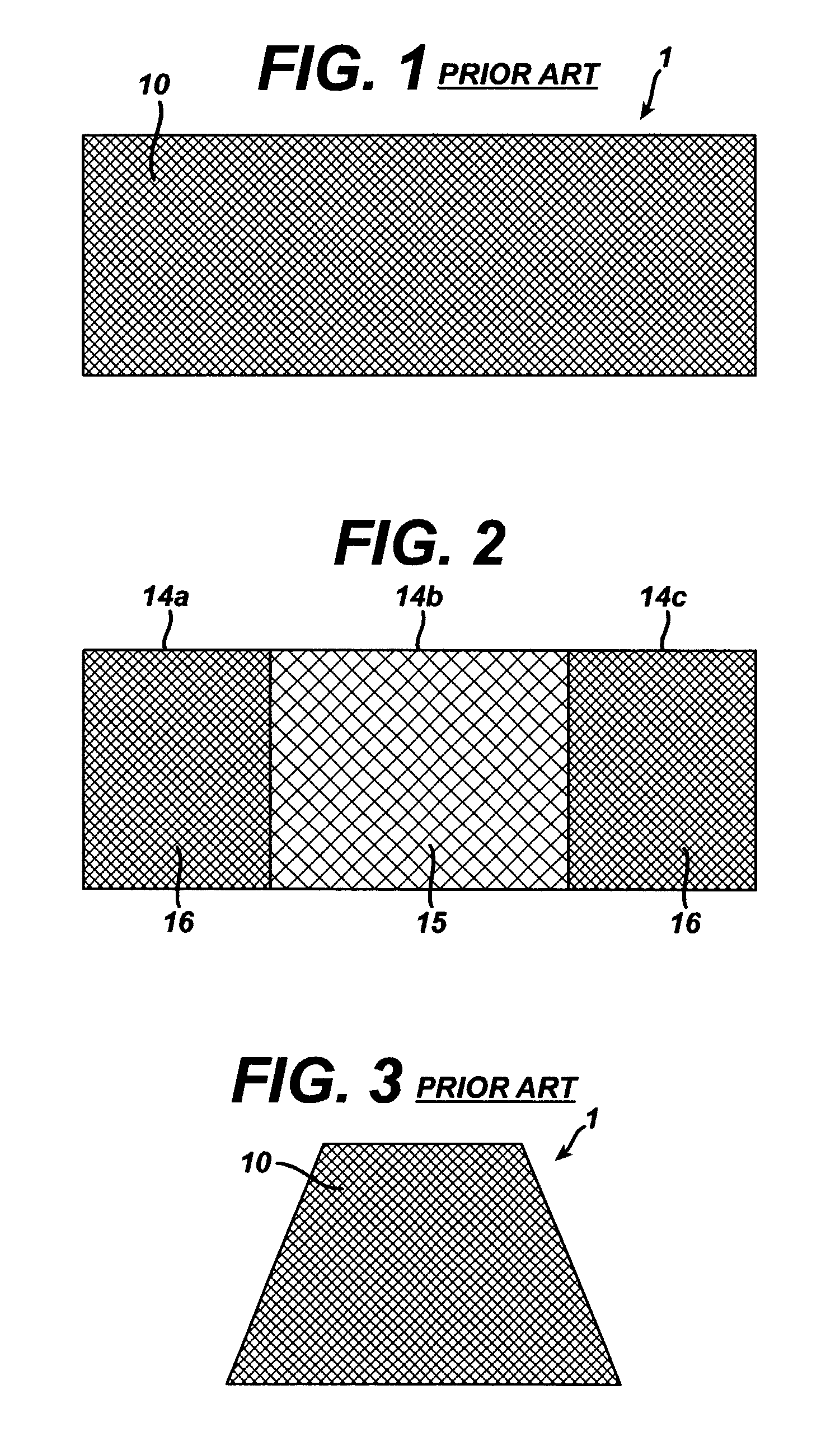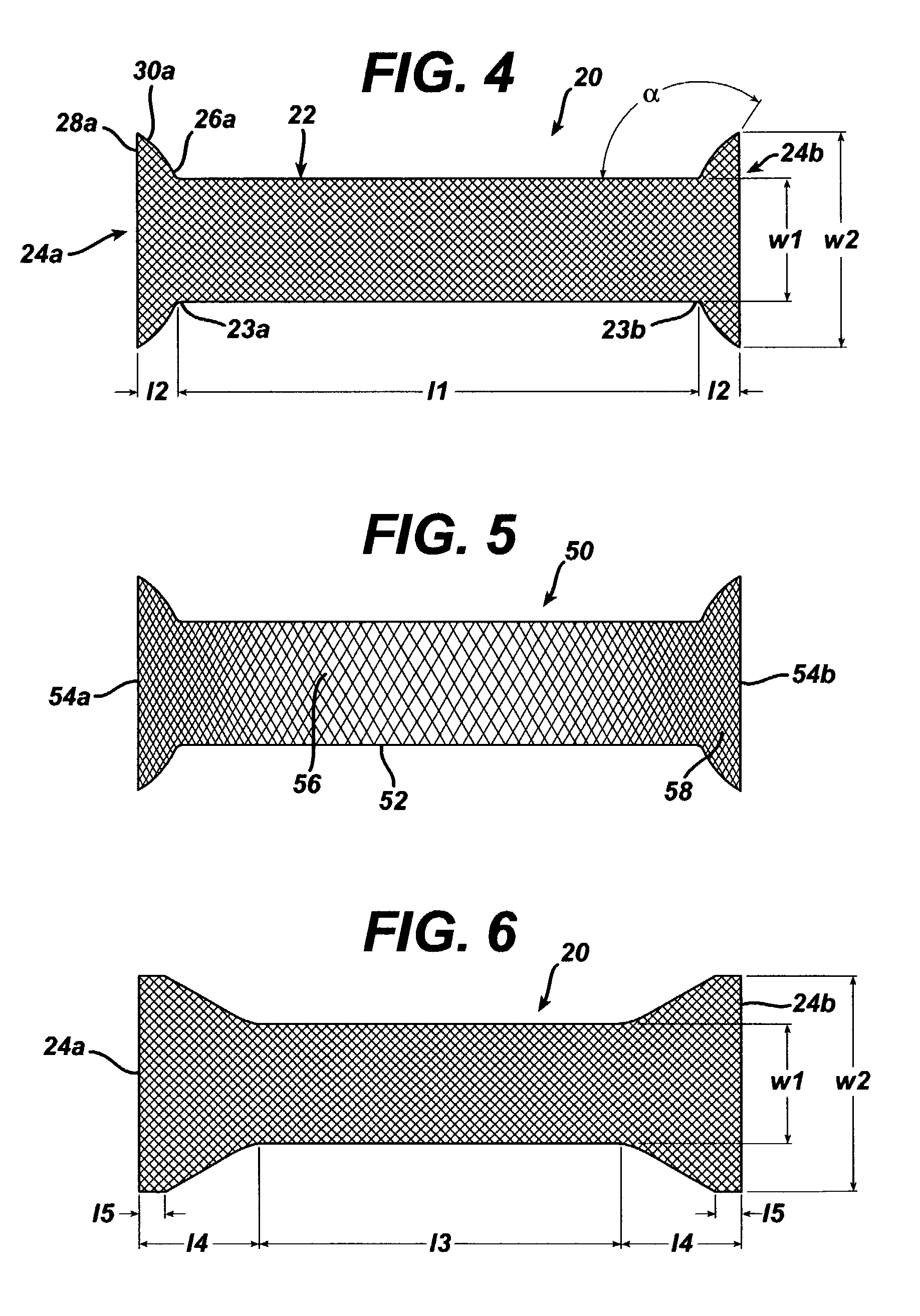Mesh for pelvic floor repair
a technology for pelvis and mesh, applied in the field of mesh design, can solve the problems of no known synthetic mesh with adequate attributes, and recurrence of prolapse or the need to remove the mesh, so as to reduce the amount of foreign body material, reduce the amount of vaginal prolapse, and strengthen the effect of weakened tissues
- Summary
- Abstract
- Description
- Claims
- Application Information
AI Technical Summary
Benefits of technology
Problems solved by technology
Method used
Image
Examples
Embodiment Construction
[0020]FIGS. 2, 4 and 5 illustrate generally various mesh configurations and designs according to the present invention having particular application for pelvic floor repair, and in particular, for repair of vaginal, rectal, or other prolapses. Although particular designs are illustrated and described, those skilled in the art will recognize that other configurations are also possible without departing from the spirit and scope of the invention described herein. The present invention is to be limited only by the claims set forth herein.
[0021]The current invention is a woven mesh, which is specially designed for use in the pelvic floor region for applications such as reducing vaginal prolapse and / or reinforcing weakened tissues in this area following a surgical repair. The unique shape and construction of the mesh is designed to minimize the amount of foreign body material implanted in the pelvic floor tissues, to thereby reduce the risk of erosion, infection, and rejection.
[0022]Comm...
PUM
 Login to View More
Login to View More Abstract
Description
Claims
Application Information
 Login to View More
Login to View More - R&D
- Intellectual Property
- Life Sciences
- Materials
- Tech Scout
- Unparalleled Data Quality
- Higher Quality Content
- 60% Fewer Hallucinations
Browse by: Latest US Patents, China's latest patents, Technical Efficacy Thesaurus, Application Domain, Technology Topic, Popular Technical Reports.
© 2025 PatSnap. All rights reserved.Legal|Privacy policy|Modern Slavery Act Transparency Statement|Sitemap|About US| Contact US: help@patsnap.com



